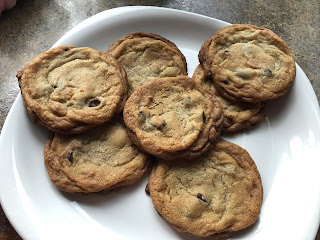SOCIALIZATION FROM BIRTH - 12 WKS, How I Raise My Puppies
Rules of 7's
By the time a puppy is 7 -12 weeks old, it should have:
Experienced AT LEAST 7 different surface: wood/woodchips, carpet, cement, linoleum/tile, grass, sand, puddles, grates, uneven surfaces, on a table, on a chair, pools etc...
Played with AT LEAST 7 different objects: fuzzy/shiny/plastic toys, rolling/jumping/clanking toys/funny sounding toys, wooden items, paper or cardboard items, milk jugs, boxes, agility equipment (tunnels) etc.
Experienced AT LEAST 7 different locations: front/back yard, other people's homes, playground lake/ocean/pond/river, boat, basement, elevator, moving car, laundry room, crate, grooming table ETC
Met and played with (outside of family) include children, adults (male and female) elderly adults, people in wheelchairs, walkers, people with canes, crutches, hats, sunglasses, etc...
Exposed to AT LEAST 7 different noises: (ALWAYS keep positive and watch puppy's comfort level-we don't want the puppy scared) garage door opening, doorbell, children playing, babies screaming and falling, motorcycles, skateboards, washing machine, shopping carts, clapping, pan dropping, vacuums, lawnmowers, etc...
Exposed to AT LEAST 7 fast moving objects: (Don't allow to chase) skateboards, roller-blades/skates, bikes, motorcycles, cars, people running, scooters, children running, planes, helicopters, boats etc.
Carmen Battaglia's Bio Sensor Method/US Militarys SuperDog Program
1. Tactile stimulation - holding the pup in one hand, the handler gently stimulates the pup between the toes, so that it becomes used to this.
2. Head held erect - using both hands, the pup is held perpendicular to the ground, (straight up), so that its head is directly above its tail. This is an upwards position. Time of stimulation
3. Head pointed down - holding the pup firmly, cupping the hips, the head is reversed and is pointed downward so that it is pointing towards the ground.
4. Supine position - hold the pup so that its back is resting in the palm of both hands with its muzzle facing the ceiling. The pup while on its back is allowed to struggle.
5. Thermal stimulation - use a damp towel that has been cooled in a refrigerator for at least five minutes. Place the pup on the towel, feet down. Do not restrain it from moving.
These five exercises will produce neurological stimulations, none of which naturally occur during this early period of life. Experience shows that sometimes pups will resist these exercises, others will appear unconcerned. In either case a caution is offered to those who plan to use them. Do not repeat them more than once per day and do not extend the time beyond that recommended for each exercise. Over stimulation of the neurological system can have adverse and detrimental results.
These exercises impact the neurological system by kicking it into action earlier than would be normally expected. The result being an increased capacity will later help to make the difference in its performance and intelligence. Those who play with their pups and routinely handle them should continue to do so because the neurological exercises are not substitutions for routine handling, play socialization or bonding.
Five benefits have been observed in canines that were exposed to the Bio Sensor stimulation exercises:
- Improved cardio vascular performance (heart rate)
- Stronger heart beats,
- Stronger adrenal glands,
- More tolerance to stress
- Greater resistance to disease
Secondary effects were also noted regarding test performance. In simple problem solving tests using detours in a maze, the non-stimulated pups became extremely aroused, whined a great deal, and made many errors. Their stimulated litter mates were less disturbed or upset by test conditions and when comparisons were made, the stimulated litter mates were more calm in the test environment, made fewer errors and gave only an occasional distress sound when stressed." Carmen Battaglia.

Comments
Post a Comment
What do you think of this?